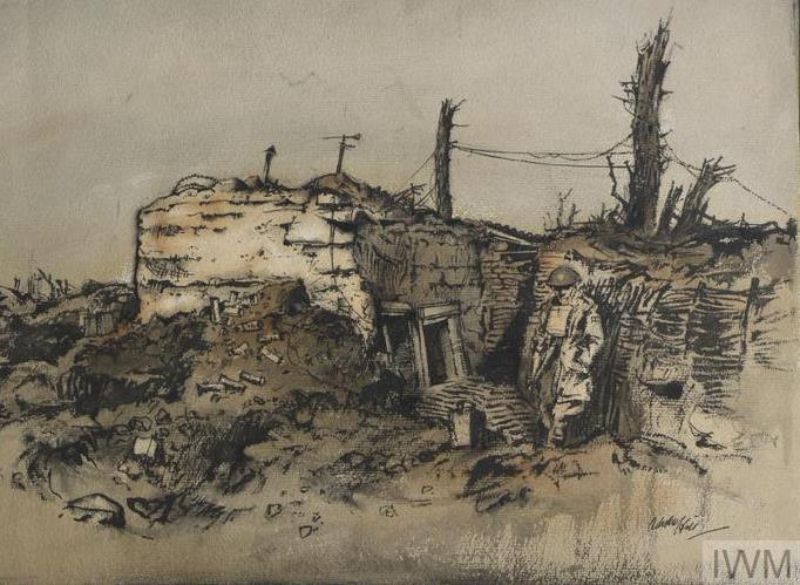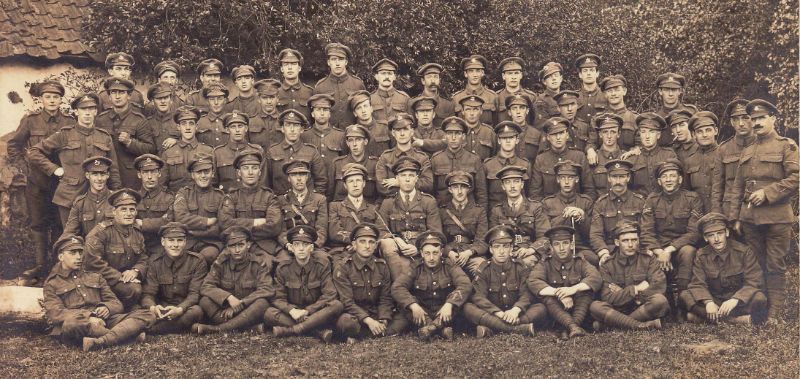Territorials Uphill Fight Toward Passchendaele
Battles of Some of the Lancashire Divisions in 1917
Ian Riley, Liverpool Scottish Museum Trust
We continue to look at the story of the Territorial Force (TF) divisions of the North West in the Great War. The winter of 1917 was marked with moments of victory, frustration, false hope and near disaster for the British Expeditionary Force in France and Belgium. In the 1917 Battles of Ypres the armies fought very slowly through often appalling conditions to reach the crest of the Passchendaele Ridge. In this article we look at the two East Lancashire Divisions and at the 57th (Second West Lancashire) Division in 1917.
Notes: KLR The King’s (Liverpool Regiment) LF Lancashire Fusiliers ELR East Lancashire Regiment LNLR Loyal North Lancashire Regiment. 1/5th LF would be 1st/5th Bn Lancashire Fusiliers (said as ‘First Fifth). A battalion was 1000 men at full strength (rarely achieved). An Infantry Division had three infantry brigades, each of four battalions, and an additional infantry battalion as pioneers. It was supported by its own field artillery, engineers (including signals), medical and logistic support and would number approximately 20,000 men at full strength.
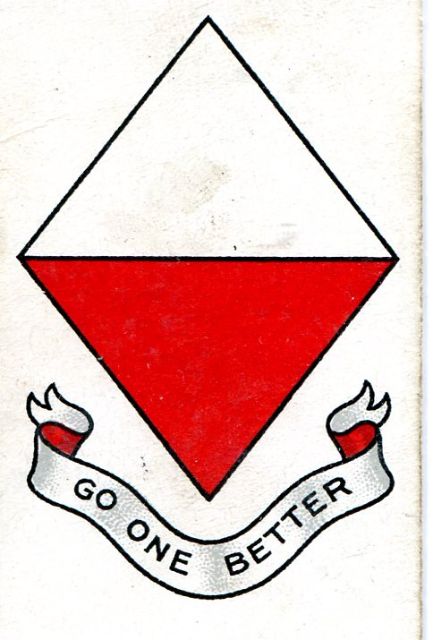 The 42nd (East Lancashire) Division
The 42nd (East Lancashire) Division
The 42nd (East Lancashire) Division, the first Territorial Force (TF) division to go overseas in 1914, was made up of infantry mainly from the Lancashire Fusiliers (LF), the East Lancashire (ELR) and Manchester Regiments. They moved from the dusty heat of the Near East (Gallipoli, Egypt and the Sinai) to the damp chill of France in March 1917. Firstly deployed to relatively quiet areas, they entered the fire-storm of the Ypres Salient in late August 1917. Apart from thirteen infantry battalions (including pioneers), they had two brigades of Royal Field Artillery (RFA) and their engineers, signals and medics. An artillery ‘brigade’ was equivalent to an infantry battalion. Their third RFA brigade, the Bolton Artillery, had become an army asset and had left the division. So it was that the Blackburn and the Manchester Artillery (210 and 211 Brigade RFA respectively) deployed immediately to the battle zone whilst the infantry trained 10 miles to the rear. The full division entered the front line for the first half of September with 125 Infantry Brigade making an unsuccessful attempt to capture Iberian, Beck and Borry ‘farms’. These were entrenched pillbox positions across a 1000 metre frontage. An officer of the 1/5th LF, George Horridge, was a pre-war Territorial and was probably commissioned by 1914. He described this attack 67 years later for the Imperial War Museum in 1984: he can be heard on the IWM website. His battalion attacked Borry Farm; he appears to have been a company commander:
We were to send two companies over the top and two companies, including mine, remained to garrison our trench. My Company HQ was in a German pillbox. When the time came, Captain Tickler’s company, Tickler of Tickler’s Jams, got out of the trenches. They went forward at a walk, nothing happened for about 100 yards and then all hell let loose; a lot of men went down. As we were on the right, the pill boxes not engaged, as no-one was attacking them, could fire on us. So we took cross-fire from the flank. 140 in that company, only 40 came back. They never took Borry Farm. Later Tickler signalled to me [probably by lamp] ‘Germans massing for counter-attack – SOS’. I fired an SOS rifle grenade - two red balls and two green balls, the signal for artillery to fire the SOS immediately. Nothing happened for five seconds [sic] so I fired another and then the barrage came down, it was like a curtain of fire, not onto our people but onto the German support trenches. There was no counter-attack. [Paraphrase of IWM Cat Sound 7498 Reel 7 - online]
Tickler brought his company in under cover of darkness. Tickler’s Jams was a household name, making ‘plum and apple jam’, a staple of trench diet and the subject of impolite songs. Early in the war, Tickler’s empty tins became ‘jam-tin bombs’ with the judicious addition of gun-cotton, iron shrapnel and a fuse. It is difficult to believe that Horridge really expected a “five second” response, less than the time of flight of the shells.
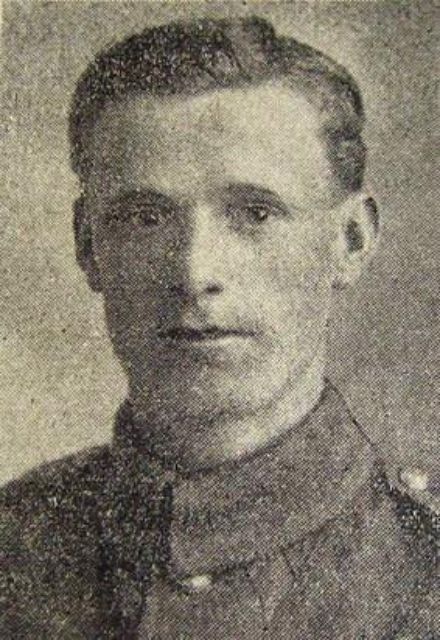 There were fatalities beyond the infantry. Private Harry Hodskinson RAMC, aged 20 from Burnley, who had survived Gallipoli and being torpedoed, was with the 1/2nd East Lancs Field Ambulance when wounded on 9/10th September. His local newspaper reported:
There were fatalities beyond the infantry. Private Harry Hodskinson RAMC, aged 20 from Burnley, who had survived Gallipoli and being torpedoed, was with the 1/2nd East Lancs Field Ambulance when wounded on 9/10th September. His local newspaper reported:
Dr Purves of Burnley wrote … I was with your boy … It was a fatal wound, no suffering. He was unconscious from the beginning. A small piece from a shell bursting [near] from our dressing station fell through a small opening in [our] cellar dugout … and hit your boy in the head. I had him brought back and buried in a military cemetery [Brandhoek New Military No. 3]. We are placing a cross over the grave and a wreath of coloured beads [Burnley Express 22 Sept 1917 – Courtesy Lesley Oldham 207 Fd Hosp RAMC]
42nd Divisional artillery supported vigorously, firing eighteen-pounder rounds at a rate of up to ten per minute when four, was the normal ‘fast’ rate to avoid barrel-wear. Remaining in line after the infantry came out, their guns were heavily committed to the Battle of the Menin Road Ridge (20th - 25th September).
The Division had had an object lesson in the particular strength of the German defensive system and the futility of ‘minor operations’ The losses from continuous shelling and unproductive local assaults were heavy in the next ten days … but the pill box problem was still no nearer solution [Gibbon – History 42nd Division]
The 42nd Division, moving north, relieved the 66th (Second East Lancashire) Division on the Belgian coast at Nieuport until the end of November. By then, the divisional commander had been replaced.
%20Divisional%20sign%20(wiki).png) 66th (Second East Lancashire) Division
66th (Second East Lancashire) Division
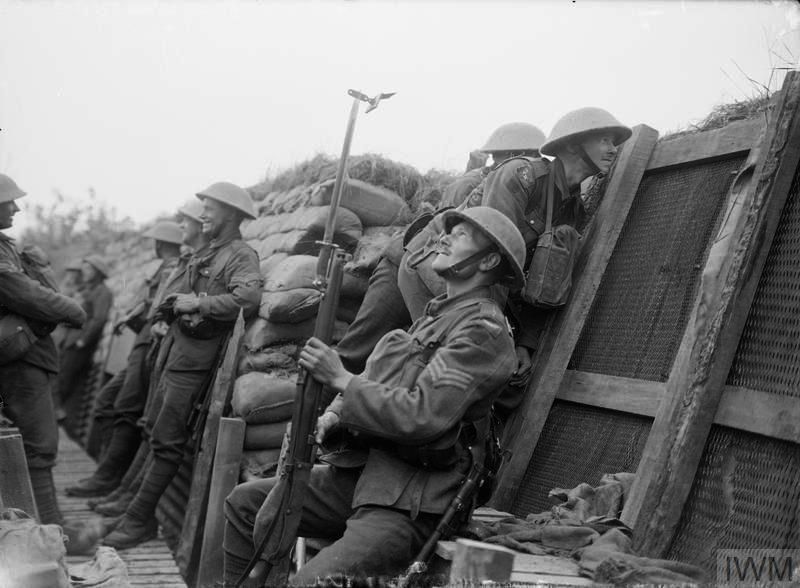 The 66th Division was a ‘second-line’ TF division, created early in the war and recruiting from the same Lancashire areas into the same regiments as its counterpart, the 42nd. Coming to France from the UK in spring 1917, it had gone to the Nieuport area and was to co-operate with a planned amphibious operation, ‘Operation Hush’, to coincide with the Ypres offensive. This sea-landing was postponed and eventually cancelled as a German attack in mid-July disrupted preparation.
The 66th Division was a ‘second-line’ TF division, created early in the war and recruiting from the same Lancashire areas into the same regiments as its counterpart, the 42nd. Coming to France from the UK in spring 1917, it had gone to the Nieuport area and was to co-operate with a planned amphibious operation, ‘Operation Hush’, to coincide with the Ypres offensive. This sea-landing was postponed and eventually cancelled as a German attack in mid-July disrupted preparation.
After moving south, the 66th Division joined the Battle of Poelcappelle on 9th October on the right flank of II ANZAC Corps, attacking north-east with their objective 700 yards short of Passchendaele village. Roger Goodwin of the Lancashire Infantry Museum (Fulwood Barracks, Preston) told the story in the Lancashire Post (6 Oct 2017); what follows is abbreviated. The 66th Division were actually fighting near what is now Tyne Cot Cemetery, some 4 miles south-east of Poelcappelle village. The ELR’s history relates the difficulties:
The country traversed was in an indescribable condition. Heavy fighting had been continuously in progress for weeks past on this front – the ground had been so ploughed up by shells that distinguishing marks had been almost completely eliminated. A ribbon of mud-soaked, shell-pitted road ran eastwards ... but on either side the country was a veritable honeycomb of shell-holes for as far as the eye could reach, the only [way forward] being by taking a winding course round the lips of the craters
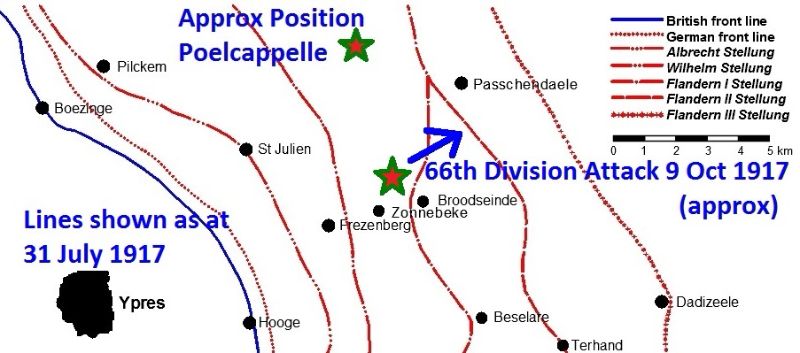
 198th Brigade (Manchesters and ELR) began moving forward early the previous day, spending the afternoon stationary with cover from neither rain nor shellfire. Their final night approach was about 2 miles through glutinous mud that took around 12 hours or more. Two battalions failed to reach the start line by Zero Hour (5.20 am), the last arriving only by 7 am. Behind an inadequate creeping barrage, they attacked defences, relatively undamaged by artillery, to be held up just short of their first objective (see map). George Crawshaw, an old boy of Bury Grammar School and medical officer of 2/5th ELR, won the MC for his gallantry in tending the wounded.
198th Brigade (Manchesters and ELR) began moving forward early the previous day, spending the afternoon stationary with cover from neither rain nor shellfire. Their final night approach was about 2 miles through glutinous mud that took around 12 hours or more. Two battalions failed to reach the start line by Zero Hour (5.20 am), the last arriving only by 7 am. Behind an inadequate creeping barrage, they attacked defences, relatively undamaged by artillery, to be held up just short of their first objective (see map). George Crawshaw, an old boy of Bury Grammar School and medical officer of 2/5th ELR, won the MC for his gallantry in tending the wounded.
On a similar approach to their ‘taped’ start line, the 197th Brigade on the right (all LF battalions) struggled along a rain-sodden track churned by pack animals and described as ‘exceedingly bad and where it crosses the Zonnebeke [stream] particularly, was well over the knees in mud of a very adhesive nature’ [War Diary, 66th Division]. The Brigade missed Zero Hour but they went immediately into the attack, disorganised and exhausted, reaching their objective 700 yards from Passchendaele village.
After some confusion and possibly unnecessary tactical withdrawal to stay in touch with flanking units, the overall advance on the day was some 500 yards in return for divisional casualties of over 3000. On the morning of 10th October, a runner appeared at HQ 2/5th ELR where the CO had taken command of all troops in the area. The barely legible message seemed to say that the objective was ‘to be taken at all costs’. A conference of COs agreed that this would mean annihilation for the disorganised and intermingled troops of 198th Brigade. It was then realised that the message was 24 hours late: total disaster was averted.
The 66th Division’s memorial window in Passchendaele Church contains the coats of arms of many of the Lancashire home-towns of its men. In the newspapers, The Times correspondent wrote that:
It was Lancashire's Day especially because of those Territorial Battalions of the Manchester, East Lancashire and Lancashire Fusiliers......of the 66th Division …The brunt of the fighting fell yesterday (9th Oct.) in the centre upon troops of North Country England, the hard tough men of Lancashire and Yorkshire [49th Division].
 57th (Second West Lancashire) Division
57th (Second West Lancashire) Division
The 57th Division was a ‘second-line’ division, the shadow of the original 55th (West Lancashire) Division. Its battalions came from the King’s (Liverpool Regiment) [KLR], the Loyal North Lancashire Regiment [LNLR], the King’s Own (Royal Lancaster Regiment) and the South Lancashire Regiment. Whilst the first-line battalions went overseas in 1914/15, the 57th Division remained on home defence until going to France in February 1917. The division was initially deployed in relatively quiet areas near Houplines and Bois Grenier, but still the cemeteries behind those lines hold many graves of the division’s men. Erquinghem Churchyard Extension Cemetery has nearly 140 divisional graves, over 45 of them belonging to 2/10th KLR whose rear HQ was in the town. By mid-September the division was training in preparation for a ‘push’, the 1917 Battles of Ypres still being in full flow. Of this training, the historian of the 2/6th KLR wrote that drill instructors could be seen trying to control what ‘looked like race crowds’ and from other areas came ‘a series of unearthly shouts betokening the efforts of a final assault party to inspire terror into the hearts of a row of disinterested sacks’ [bayonet practice]. The solving of the ‘pillbox problem’ was no closer; various ideas for attacking strongpoints were simultaneously proposed and practised, many contradictory. By 23 October, the division was moving up towards Ypres and after occupying billets described as ‘the lowest form of habitation that could possibly be described as a camp’ (corrugated iron and groundsheet lean-tos) the 2/6th KLR went into the reserve trenches at short notice. Although there were minor actions, patrolling and all the friction of trench warfare, only one of the 57th Division’s three brigades seems to have made a formal attack in this period.
At the ‘Second Battle of Passchendaele’, just one phase of ‘Third Ypres’, 170th Infantry Brigade ( 2/5th Bn. King’s Own, 2/4th Bn., 2/5th Bn. and 4/5th Bn. LNLR) attacked on 25th October across 1000 yards of No Man’s Land with its three LNLR battalions forward and the 2/5th King’s Own in support. Battalions attacked three companies forward and one in support. Each platoon had a frontage of about 160 yards. Rifles and Lewis guns were almost impossible to use with the mud and reliance was on the bayonet. Casualties within the division in attack and support were very heavy. By the beginning of November the whole of the division was moving into a rest area.
The account of the 55th (West Lancashire) Division at the Battle of the Menin Road Ridge and in the German counter-attack at Cambrai at the end of November, in which one of the division’s battalions virtually vanished, must wait till the next edition.
Acknowledgements:
Lesley Oldham, 207 Field Hospital RAMC
Roger Goodwin, Lancashire Infantry Museum
Mark Hone, Bury Grammar School
Wikipedia (for guidance, cross-checked against original diaries, National Archive)
Further Reading and Listening:
Official History of the War – France and Belgium 1917 Volume 2
George B, Horridge (sound recording): www.iwm.org.uk
Lancashire Infantry Museum: History of the East Lancashire Regiment: 1914-1918
Frederick P. Gibbon: The 42nd (East Lancashire) Division 1914-1918
Members of the Corps: History of the East Lancashire Royal Engineers (Naval and Military)
C.E. Wurtzburg: The History of the 2/6th (Rifle) Bn King’s (Liverpool Regiment)
H.C. Wylly: The Loyal North Lancashire Regiment 1914-1919
A.M.McGilchrist: The Liverpool Scottish 1900-1919
SS 143 Instructions for Training of Platoons for Offensive Action1917
An extended version of this and previous articles will be found at www.liverpoolscottish.org.uk (Tab - Magazine Articles)
Previous page: Mud Waist Deep, Rain in Buckets, the Start of ‘Third Ypres’
Next page: Triumph and Disaster – Autumn 1917
